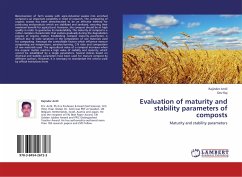The feasibility and development of a field emission based anisotropic vector magnetometer is presented. Within this scope current magnetic sensing technology is investigated and compared. The advantages of, and need for, a field emission based magnetic sensor are then discussed. The magnetic sensing device presented uses a sharp field emitting tip with a radius of the order of 100nm which is fabricated using standard silicon processing techniques. Under a vacuum and at room temperature, an electric field is applied to a surrounding gate electrode which extracts a beam of electrons from a cathode tip, this electron beam is incident upon two separate anode electrodes: In the absence of an external magnetic field the electron current incident on each of these two electrodes is equal, while in the presence of a magnetic field the Lorenz force skews the beam towards one of the electrodes, resulting in a differential current which is proportional to the magnetic field.
Bitte wählen Sie Ihr Anliegen aus.
Rechnungen
Retourenschein anfordern
Bestellstatus
Storno








